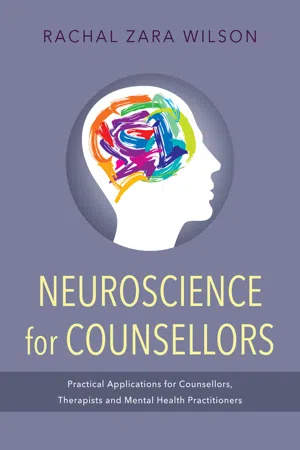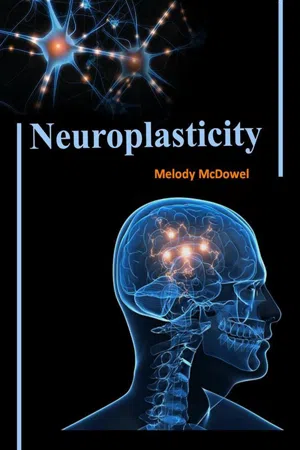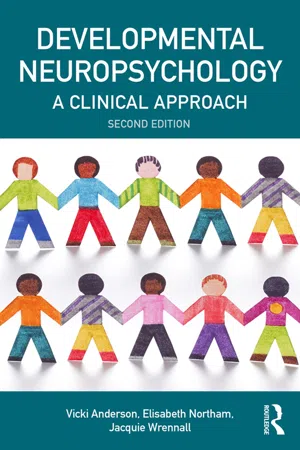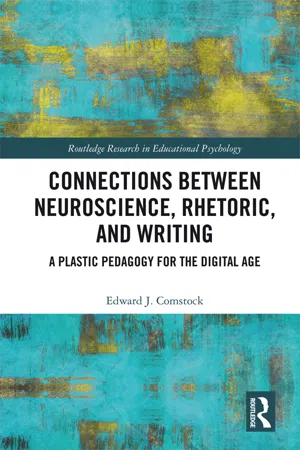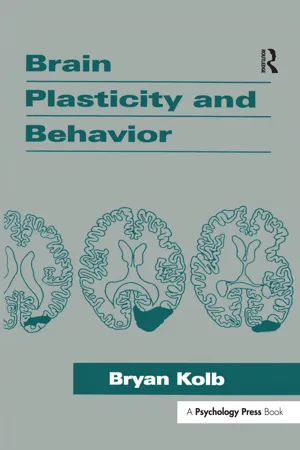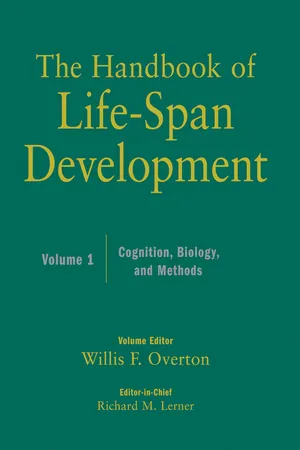Psychology
Neural Fluidity
Neural fluidity refers to the brain's ability to adapt and reorganize itself in response to new experiences, learning, and environmental changes. This concept highlights the brain's plasticity and its capacity to form new neural connections, rewire existing ones, and modify its structure and function throughout life. Neural fluidity plays a crucial role in cognitive development, learning, and recovery from brain injuries.
Written by Perlego with AI-assistance
Related key terms
10 Key excerpts on "Neural Fluidity"
- eBook - ePub
Neuroscience for Counsellors
Practical Applications for Counsellors, Therapists and Mental Health Practitioners
- Rachal Zara Wilson(Author)
- 2014(Publication Date)
- Jessica Kingsley Publishers(Publisher)
Chapter 2 Plasticity and How the Brain Works Plasticity is one of the newer discoveries of neuroscience, and it changes our concept of the brain and how it works. It also changes our ideas about what is possible when the brain is working in a dysfunctional way. Plasticity and BDNF What do we know? First, some very basic neuroscience, for which much more detailed and complicated explanation is available from other sources (Haines, 2006; Kandel, Schwartz and Jessell, 1995; Squire, 2008). Neurons are one of the two main classes of cells in the brain, the other class being glial cells. Neurons are the signalling units of the nervous system. There are different types for example, sensory neurons, motor neurons, and interneurons that perform a relay function. Neurons have tails, called axons, with dendrites extending from the axon like branches of a tree. Axons vary in length from very tiny to almost a metre long. They are typically sheathed in a substance called myelin, provided by the glia. Every neuron has thousands of connections with other neurons across small spaces called synapses. Communication across the synapses can be either chemical, through the secretion and reception of a variety of neurotransmitters, or electrical, via electrical charge from the head of the pre-synaptic neuron to the dendrites of the post-synaptic neuron that polarizes or depolarizes the next neuronal cell. (These are called action potentials.) Plasticity comes from the Greek word plaistikos (Johnston, 2003). In the term ‘brain plasticity’ it refers to the recently discovered ability of the brain to change itself and to adapt to its environment by weakening or strengthening different synaptic connections (Ben-Shachar and Laifenfeld, 2004). Hebb (1949) was the first to conceive of networks of ‘cellular assemblies’, or neuronal connections, which, when used repeatedly, formed preferential pathways in the brain - eBook - ePub
- Melody MyDowel(Author)
- 2013(Publication Date)
- Payhip(Publisher)
1. Definition Neuroplasticity or brain plasticity stands for the brains ability to reorganize itself by forming new neural connections. The term is derived from two words: Neuron and Plastic.Neuron is a nerve cell in our brain and it consists of stoma (or the body), an axon and dendrites. Neuron cells are electrically excited cells that process and transmit information through electrical and chemical signals. The cells are connected with each other by synapses, which transmit chemical signals and allow neurons to form neural networks. All neurons are electrically excitable. They maintain voltage gradients across their membranes by ion channels and ion pumps. What that means is that when there is a high voltage change, ion pumps generate action potential and the information travels through network of neurons, from one cell to another.Now, how does action potential work? When there is a signal from another neuron, there is a polarity change across the membrane. Polarity changes due to sodium and potassium ions and ion pumps that open and close as the membrane reaches the threshold potential. What happens is that sodium ions enter the membrane, causing depolarization and when potassium channels open, potassium ions travel out of the axon and repolarization accurse. This creates the change in polarity and allows an impulse to travel through the axon, to the axon terminal where it passes the signal to other neurons.There are different types of neural cells, like sensory neurons, motor neurons and interneurons and they are the core components of the brain, spinal cord and peripheral ganglia and all together they form the nervous system.The word “Plastic” doesn’t mean it has plastic consistency as one my think but it refers to the ability of change. Plastic stands for mold, modify or sculpt. Brain has an ability to modify its structure and function, caused by bodily and environmental changes. - eBook - ePub
Neural Plasticity Across the Lifespan
How the brain can change
- Gianfranco Denes(Author)
- 2015(Publication Date)
- Routledge(Publisher)
Experience is, at the behavioral level, the critical factor of the postnatal, culturally acquired learning process. It represents, at the neural level, the most important factor of brain plasticity, the process by which the brain can change structure and function to cope with new experiences and react to the effect of acquired damage or sensory deprivation. This process produces changes in the brain, both at anatomical and functional levels. At the morphological level, the modifications are at the synaptic level rather than stimulating the process of neurogenesis. At the functional level, neural plasticity refers to the reorganization of the neural activity following experience, training or brain damage, without anatomical modifications.Specific factors, from age to brain damage, can enhance or limit the process of neural plasticity. Similarly, plasticity is not a widespread process across the brain; some brain regions can adapt more easily than others to the changing environment.While in the past the morphological aspects of neural plasticity could be experimentally studied only in non-human species, the advent of neuroimaging studies such as magnetic resonance imaging (MRI) and functional MRI (fMRI) allow the recognition that, in animal as well as human brains, structural and functional changes can occur and can be mapped in vivo, following behavioral modifications induced by experience and other factors.The process of plasticity can involve modality-specific brain areas or can extend through a process of cortical and subcortical connectivity to additional cerebral areas. Finally, it must be noted that the process of cerebral plasticity is, at least in some cases, maladaptive, as in musician’s dystonia or chronic pain.Notes
- A term introduced by Francis Galton , cousin of Charles Darwin.
- Near-infrared spectroscopy (NIRS) , a noninvasive optical technique, measures changes in the hemoglobin oxygenation state in the human brain (for a review, see Hoshi, 2003 ; Hebden, 2003 ). Unlike PET and fMRI, NIRS does not require strict motion restriction nor use of radioactive substances (PET). It therefore represents a useful tool for studying the brain mechanisms of the youngest developmental populations from birth to the toddler years. Apart from its clinical use (monitoring cerebral oxygenation and hemodynamics in preterm infants affected by cerebral hypoxic-ischemia and admitted to an intensive care unit), it represents a potential tool for functional mapping studies. NIRS has proven to be an excellent research tool for studies of functional activation (functional near-infrared spectroscopy, fNIRS); it has, for example, clarified the origins of the left lateralization of language processing in the brain, revealing lateralization to the native language at birth (Gervain et al., 2008
- eBook - ePub
Distributed Perception
Resonances and Axiologies
- Natasha Lushetich, Iain Campbell, Natasha Lushetich, Iain Campbell(Authors)
- 2021(Publication Date)
- Routledge(Publisher)
Part IIPlasticity
DOI: 10.4324/9781003157021-9Passage contains an image
7 Unstable brains and ordered societies
David W. BatesOn the conceptual origins of plasticity, ca . 1900DOI: 10.4324/9781003157021-10Within contemporary neuroscience, plasticity has emerged as a foundational and dominant concept, one confirmed by advanced imaging techniques as well as extensive clinical, experimental, and theoretical work. While the concept seems to imply radical openness and even freedom, in fact the neuroscientific idea of plasticity has been seamlessly assimilated into computational models of the mind. Several research groups have embarked on projects to construct neuro-synaptic chips that mimic the kind of connectivity and learning potential of organismic brains (see Akopyan et al . 2015 ), and one could also argue that the massive influence of deep learning and other forms of artificial intelligence that rely on artificial neural networks has provoked new models of cognition predicated on the dynamic plasticity of connective ‘weights’ and their constant adjustment and transformation. This blurring and interplay between neural and technical discourses is hardly unprecedented. Yet today, given the increasing intensity and accelerated speed of our digital infrastructure, the actual relationship between our living brains and our technical sphere demands more critical attention. If modern algorithmic systems are not simply predicting human behaviours but also moulding them via our plastic minds and brains, what kind of human beings are we becoming?Despite some tentative, and often unsatisfying, efforts to probe the links between brain plasticity, technology, and the formation of culture in evolutionary psychology and cognitive science (e.g. McDermott 2016 - eBook - ePub
Developmental Neuropsychology
A Clinical Approach
- Vicki Anderson, Elisabeth Northam, Jacquie Wrennall(Authors)
- 2018(Publication Date)
- Routledge(Publisher)
equipotential’, with minimal functional localisation early, facilitating healthy brain tissue to take up functions that were previously the responsibility of damaged areas. Animal and human work has expanded the breadth of this debate, extending the scope of inquiry from a brain-specific one to include a range of dimensions – environment (social context, parenting style, access to interventions) and child characteristics (sex, age at insult, genetic characteristics, pre-morbid adaptive ability and temperament) – as potential mediators of recovery after early brain insult (Anderson, Catroppa et al., 2009; Anderson, Spencer-Smith et al., 2009; Anderson, Spencer-Smith, & Wood, 2011; Catroppa & Anderson, 2008; Giza & Prins, 2006; Yeates et al., 1997). Advances in the neurosciences (e.g., transcranial magnetic stimulation, functional magnetic resonance imaging [fMRI], tractography, deep electrodes) provide the necessary tools to consider these factors and their interactions with developmental processes.Early plasticity versus early vulnerability Theoretical perspectivesWith the evolving capacity to integrate genetic, imaging and behavioural findings, there is an opportunity to better map the principles of brain plasticity. In this context, it is important to acknowledge the distinction between two separate, somewhat independent dimensions: neural and functional plasticity. Neural plasticity, the brain’s response to the environment, refers to physiological processes at molecular, cellular, neurochemical and neuroanatomical levels and at the level of brain systems. Functional plasticity - eBook - ePub
Introduction to Clinical Mental Health Counseling
Contemporary Issues
- Joshua Watson, Michael K. Schmit(Authors)
- 2019(Publication Date)
- SAGE Publications, Inc(Publisher)
With the burgeoning research on neuroplasticity and the popular press’s tendency to uncritically extol its benefits, much has become misunderstood, oversimplified, and perhaps even exaggerated, in its ease of application for personal change. Michael Merzenich (2013), a pioneer in neuroplasticity and active engineer of neuroscience into clinical practice, noted that the work requires the capacity for focused attention, dogged determination, a commitment to hard work, and ongoing maintenance of an overall healthy brain. Mental health counselors are well advised to better understand the underlying neuroscience, but they must also appreciate the challenge of integrating this knowledge into more effective therapy. The following implications are presented to help summarize the key principles of neuroplasticity and to guide mental health counselors in its realistic application with their clients.- Neuroplasticity can work both for and against a client. Neurologically speaking, problem states involve deeply ingrained neural pathways that are all too easily triggered, automatically replay, and become strengthened with each repeated episode. To alter and reconstruct such patterns with a more positive and healthier neuropathway is difficult but not impossible.
- The brain is capable of incredible change across the life span, but it is not easy. Significant change takes a lot of effort. Clients must be able to be alert, engaged, motivated, and ready for action to stimulate the necessary neurochemicals for neuroplastic change.
- Certain conditions make neuroplastic change more likely. These involve the brain’s current overall physiological health and include such factors as sleep, diet, and exercise, as well as the presence and consequences of past overwhelming psychosocial stress, trauma, or depression. Of course, the effects of aging, substance abuse, physical injury to the brain, and chronic debilitating health conditions can also conspire to make neuroplastic change more difficult. Clients’ overall wellness matters.
- Learning is an associative process and involves incremental and progressive change that continually modifies and corrects previous neural pathways. Less efficient behavioral patterns take time to weaken and become replaced with more efficient patterns before mastery can be achieved. Trial and error, repetition of new behavior, and reinforcement of positive outcomes all help strengthen more positive pathways.
- eBook - ePub
- CLAYTON SCOTT CROCKETT, B. KEITH PUTT, JEFFREY W ROBBINS(Authors)
- 2014(Publication Date)
- Indiana University Press(Publisher)
They begin by saying: “The mechanisms of memory are based on an essential property of the nervous system: neuronal plasticity.” 27 Furthermore, plasticity “enables the brain to register in a lasting way pieces of information coming from our environment, making it possible for the experiences undergone by each individual to leave a trace in the neuronal circuits.” 28 While this has generally been linked with the formal aspects of learning, they state that “it is legitimate to suppose that [traces] maybe extended to all of an individual’s experiences, especially to what contemporary neuroscientists call emotional memory.” 29 For them, the reality of plasticity as a biological phenomenon suggests a mechanism for understanding the individuality and uniqueness of each subject. Therefore, when Mahmood states that she is interested in “the work [practices] do in constituting the individual,” I would argue that the work she is referring to is best understood through the processes of learning and memory associated with neural plasticity. 30 The practices of the women she studies have the power to shape them as subjects precisely because their practices and experiences are able to structure neuronal networks and bodily processes in particular ways. Consequently, I believe that what is fundamental to her subject, insofar as it enables the formative processes that she describes, is its plasticity. Again, this is not to say that the subject can be reduced to brain processes, but that those brain processes in conjunction with gestural and disciplinary practices allow for certain modes of subjectivation that give rise to different subjectivities. However, this type of process should not be seen as only developing desires, or intentional states in general. Such a view would limit our understanding of subjectivity in a way that would center on the role of consciousness - eBook - ePub
Connections Between Neuroscience, Rhetoric, and Writing
A Plastic Pedagogy for the Digital Age
- Edward J. Comstock(Author)
- 2018(Publication Date)
- Routledge(Publisher)
What Should We Do? 79). We can do this precisely because, unlike the automaton, the human organism has the plastic potential to not only adapt, but to (explosively) transform the (brain’s) code. It is in this way too that learning is not the linear, cumulative, flexible process we’ve long imagined, but instead requires a plastic disposition capable of greeting and accommodating otherness. This utterly transformational, explosive relation between the brain and consciousness—having the character of an accident or event—could never be mere flexibility, because in explosions the stored energy of the brain becomes something totally other than itself, resisting reduction to itself through its (destructive, explosive) contacts with Otherness (the social symbolic). In this way, there is nothing automatized about brain function.Above all, flexibility, or “plasticity minus its genius” (12), emphasizes only the organism’s ability to receive form. And as Malabou theorizes, any definition of plasticity must conceptualize an “agent of resistance” that refuses form as it takes shape:From the Greek, plassein, to mold—the word plasticity has two basic senses: it means at once the capacity to receive form [think clay] … and the capacity to give form [think plastic surgery]…. From this perspective, to talk about the plasticity of the brain means to see in it not only the creator and receiver of form but also an agency of disobedience to every constituted form, a refusal to submit to a model.(5–6)Neither the creativity nor receptivity of plastic form can be thought in accordance with a fixed (political or biological) model. Or, in other words, consciousness entails a self-creative capacity that emerges in dialectical relation to—in an explosive, disobedient relation to—the underlying neural map.“Paradoxically,” Malabou stipulates, “if we were flexible, if we didn’t explode at each transition, if we didn’t destroy ourselves a bit, we could not live. Identity resists its own occurrence to the very extent that it forms it” (What Should We Do - eBook - ePub
- Bryan Kolb(Author)
- 2013(Publication Date)
- Psychology Press(Publisher)
Behavioral states, including mind states, correspond to brain states. Although this proposition is not novel, and probably appears to be self-evident to most neuroscientists, it has been a central philosophical issue since the time of Descartes. In fact, modern-day philosophers still debate this issue seriously, in large part because mind (or “cognitive processes” in modern jargon) is the central problem of psychology. In this volume I assume that it is the brain that thinks and controls behavior, and try to show that an understanding of plasticity will be enlightening with respect to how it does these tricks!- The structural properties of the brain are important in understanding its function. It follows from my first assertion that changes in the physical structure of the brain will be reflected in changes in its functioning. Although many behavioral scientists (e.g., Pylyshyn, 1980 ; Skinner, 1938 ) have seen the structure of the brain as virtually incidental to the study of its function, this is not my view. Rather, I assume not only that changes in structure underlie behavioral change but also that it is possible to identify and potentially influence those changes. This does not imply that a single structural change is responsible for all behavioral change, nor that a particular behavioral change is due solely to one morphological change, nor that an understanding of morphology means an understanding of the functional properties that emerge from the morphology. It does mean, however, that the cerebral organization places significant constraints on the computations of the brain and may provide important clues for understanding the nature of those computations.
- Plasticity is a property of the synapse. The Spanish anatomist Ramon y Cajal postulated in the early part of this century (1928) that the process of learning might produce prolonged morphological changes in the efficiency of the connections between neurons (Fig. 1.1 ). However, it was not until 1948 that a Polish neuroscientist, Jerzy Konorski, formally proposed a mechanism. He suggested that appropriate combinations of sensory stimuli could produce two types of changes in neurons and their connections: (a) an invariant but transitory change in the excitability of neurons, and (b) an enduring plastic change in neurons. In other words, Konorski suggested that when neurons are active they change. This change might be transitory, much as when one looks up a phone number and then forgets it, or it might be enduring, such as the case in which a telephone number is memorized. The idea that neurons are somehow changed with use is important, for it means that one could look at the neuron and try to identify the changes. The question is, however, where do you look? A Canadian psychologist, Donald Hebb, proposed in 1949 that the logical place to look is at the synapse (Fig. 1.2 ). He suggested that when synapses are active, they change if the conditions are right. For Hebb, the most important condition was that two neurons had to be coincidentally active and if so, then the connection between them was strengthened.2 Hebb’s addition was important, for it (a) specified the conditions under which plasticity would occur and (b) pointed to a role of both the pre- and postsynaptic side of a connection in plasticity. This latter conclusion means that plasticity can be measured either pre- or postsynaptically. It also follows from Hebb’s proposals that during development, learning, recovery from injury, and aging, there are changes at the synapse that allow the brain to be functionally plastic.
Fig. 1.1 - eBook - ePub
The Handbook of Life-Span Development, Volume 1
Cognition, Biology, and Methods
- Richard M. Lerner, Willis F. Overton(Authors)
- 2010(Publication Date)
- Wiley(Publisher)
As such, fluid intelligence, as with EF, has been closely associated with a network of brain structures and neural circuitry based in PFC. Furthermore, fluid intelligence has to a limited extent (primarily through its association with working memory) been linked to specific neurotransmitters and neuromodulators, and variants of genes that are relevant to brain structure and function of PFC and related neural circuitry (Arnsten, 2000; Ramos & Arnsten, 2007; Tunbridge, Harrison, & Weinberger, 2006). Life-Span Development and Relational Developmental Systems Theory Before describing aspects of the neural and chemical architecture of brain areas important for fluid intelligence, it is important to consider the relation of neurobiology to experience. What has been absent to a considerable extent from research on the neural basis of intelligence is much explicit consideration of the ways in which biology and experience are related in development. Here, life-span developmental theory is needed to address the ways in which biology and experience are coactive contributors to development through the process defined as probabilistic epigenesis (Gottlieb, 1983; Gottlieb & Halpern, 2002). Probabilistic epigenesis is a central tenet of developmental psychobiology, as well as being a central feature of relational developmental system theory (Lerner, 2006; Lerner & Overton, 2008; Overton, 2006). Probabilistic epigenesis refers to a developmental analysis that seeks to explain how influences on behavior at multiple levels combine over time to shape development (Gottlieb, 1998). Specifically, bidirectional and coactive relations are acknowledged among levels of analysis ranging from the genetic, to the neural, to the behavioral, to the physical, social, and cultural
Learn about this page
Index pages curate the most relevant extracts from our library of academic textbooks. They’ve been created using an in-house natural language model (NLM), each adding context and meaning to key research topics.
